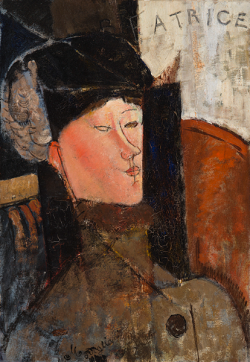Basic
Info
Title:
The Danish Girl
Genre:
Biography, Drama, Romance
Country:
United Kingdom, United States
Language:
English
Running
time: 120 minutes
Release
date: 5 September 2015 (Venice International
Film Festival), 27 November 2015 (United States), 1 January 2016 (United
Kingdom)
Staff
Director:
Tom Hooper
Produced by: Tim Bevan, Eric Fellner, Anne
Harrison, Tom Hooper, Gail Mutrux
Screenplay: Lucinda Coxon
Music: Alexandre Desplat
Cinematography:
Danny Cohen
Edited
by: Melanie Ann Oliver
Cast
Eddie Redmayne as Einar Wegener/Lili
Elbe
Alicia Vikander as Gerda Wegener
Ben Whishaw as Henrik Sandahl
Sebastian Koch as Dr. Kurt
Warnekros
Amber Heard as Ulla Paulson
Matthias Schoenaerts as Hans Axgil
Summary
"The Danish Girl" is a
2015 biographical romantic drama film directed by Tom Hooper, based on David
Ebershoff’s 2000 novel of the same name, and loosely inspired by the lives of
Danish painters Lili Elbe and Gerda Wegener. The film stars Eddie Redmayne as
Elbe, one of the first known recipients of sex reassignment surgery, Alicia
Vikander as Wegener, and Sebastian Koch as Kurt Warnekros.
 |
| Lili Elbe |
 |
| Gerda Wegener |
Participated in the main
competition of the 72nd Venice International Film Festival and screened in the
Special Presentations section of the 2015 Toronto International Film Festival,
it was released in a limited release on November 27, 2015 by Focus Features in
the United States.
Despite criticism for its
inaccurate portrayal of historical events, Redmayne and Vikander's performances
received widespread acclaim and nominations for all of the major acting awards
such as Vikander won the Academy Award for Best Supporting Actress and Redmayne
was nominated for the Academy Award for Best Actor.
Movie
Review
“Brave beauty”
“Excellent Performances
from the Two Leads”
“Beautifully shot with
good performances”
“Certainly Touchy Subject
Matter”
“One of the best period
pieces from 2015”
“Woman Trapped in a Man's
Body”
“Redmayne shines once
again”
“Mostly true story of an
early transgender case in Denmark”
“A touching story”
Interesting
stories about the film
1. Many details of Einar Wegener's
life were difficult to trace, both to the book's author and to the film's crew,
and were not documented in Denmark either. Dresden's women's hospital had
medical records, but none after World War II. They found newspaper items,
memoirs of Wegener's friends and records of some similar surgeries at the time.
2. The film inspired more research
into the period and aroused interest in Elbe and Gerda Wegener, who were the
subject of a big art exhibition held in their hometown, Copenhagen, Denmark in
2016.
 |
| Lili Elbe by Gerda Wegener |
3. Although the film is set in
Denmark and features Danish characters, none of the main cast is Danish and no
Danish language is used in the film.
4. Tom Hooper claimed that he cried
three times when he first read the script and then he knew he had to direct the
film.
 |
| Tom Hooper |
5. According to director Tom
Hooper's interview, more than 40 transgender people participated in the
production of the film as supporting actors and extras.
6. Understanding the film's
sensitive and controversial subject matter, Tom Hooper tried to make the film
as neutral as possible. The film leaves Lili's transition to the audience's
interpretation without praising or criticizing.
Thank you.


































